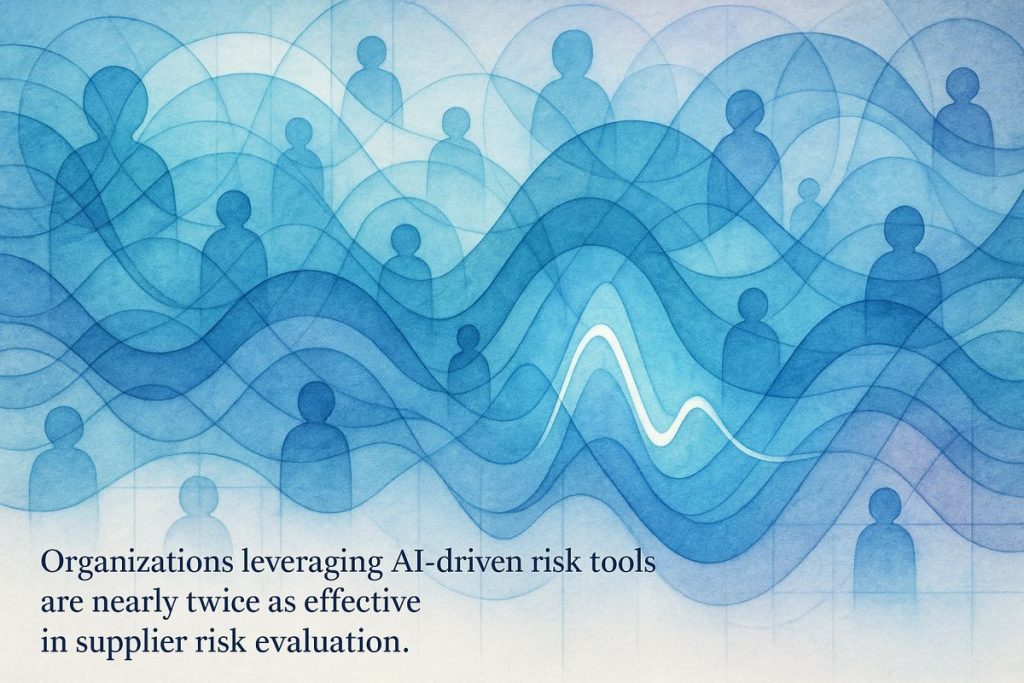Gartner’s new risk tools for pharma supply chains use smart analytics and AI to spot problems early, help teams work better together, and keep everything running smoothly. Instead of old, clunky systems, these tools connect with platforms like SAP IBP and DataRobot to predict issues before they grow into big disasters. The tools also help different departments share information, so everyone can react quickly and make better choices. With these upgrades, pharma companies can go from always playing catch-up to staying a step ahead, turning chaos into something much easier—and even a bit fun—to manage.
What are Gartner’s next-generation risk tools for pharmaceutical supply chains?
Gartner’s next-generation risk tools for pharma supply chains use advanced analytics and AI to identify risks, benchmark performance, and enhance collaboration across teams. Integrated with SAP IBP and DataRobot, these tools help companies proactively manage disruptions and achieve greater supply chain agility and resilience.
The Supply Chain Hydra: Why Pharma Needs a New Playbook
You ever try to juggle vials of insulin, regulatory binders, and a ticking metronome—while blindfolded? That’s Tuesday for most chief supply chain officers in pharma. Supply chains here aren’t just labyrinthine; they’re like palimpsests, layered with old and new rules, as if Kafka and SAP designed them over espresso. Every few weeks, some hyperspectral disruption—be it a surprise FDA memo or a Suez Canal hiccup—trundles in, and suddenly, your plans smell suspiciously like panic and burnt toast.
Gartner (yes, the same folks who once declared blockchain the Next Big Thing) has tossed a lifeline into these choppy waters: a suite of risk assessment tools supposedly tuned for pharma and life sciences. My first thought? “Another shiny dashboard.” But then I remembered the time a late shipment left us scrambling for cold-chain capacity, and the sound of my phone vibrating at 2 a.m. still haunts me. So, maybe I’m not too jaded after all.
Their approach is refreshingly non-mythical: concrete frameworks, analytics tight as a drum, and—crucially—plug-and-play with SAP Integrated Business Planning (IBP) and DataRobot. The idea? Make supply chains less like Rube Goldberg machines and more like, well, finely-tuned orchestras—or at least a competent jazz trio.
Gartner: Supply Chain Risk Management
Decoding Chaos: Analytics With Teeth (and Fizz)
Let’s get specific. Gartner’s tools aren’t fluff; they’re powered by advanced analytics and AI, the kind that chews through petabytes like a famished grad student at a free pizza seminar. When integrated with platforms like DataRobot, machine learning can sniff out SKU-level demand shifts before your nose even twitches. I once relied on a hunch (never again). These algorithms tracked climate quirks, inflation blips, and even supply chain ripple effects from events as arcane as a latex shortage in Malaysia. The data sings—a mixture of hard numbers and, oddly, something almost olfactory, like the sharp tang of new plastic wrappers.
Benchmarks? Oh, they’ve got those in spades. Compare your risk posture against industry standards. Turns out, only about 30% of pharma companies have a formal, org-wide risk appetite statement—fewer still break it down by unit. That gap? Massive, but not insurmountable, if you’re willing to let the data tell you where the soft underbelly lies.
Sure, I’ve been burned by black-box software before. (Who hasn’t?) But seeing DataRobot’s models process real-time volatility left me—well—mildly awestruck. You really can smell the digital smoke when the engine is running hot.
DataRobot Demand Planning App for SAP IBP
Collisions, Collaborations, and Culture Shifts
If you think risk management is just a software problem, step out of that echo chamber. Gartner’s suite nudges, cajoles, and—if you’re inattentive—bludgeons supply chain, finance, and compliance teams into collaboration. The tools thrive on integration: risk data isn’t siloed but splashed across functional boundaries like a Jackson Pollock canvas. Not always tidy, but usually illuminating.
I’ll admit, I once doubted the merits of pulling IT into a risk review—until a friendly sysadmin flagged a sneaky data integration bug that would have derailed our inventory visibility for weeks. Lesson learned. Sometimes, the best insights come with the faint aroma of server room coffee and a hint of skepticism.
This cross-pollination means you’re not just reacting to crises (ugh) but can actually game out risk-reward trade-offs before they explode. The research is clear: firms embracing digital and collaborative practices blitz past laggards when disruption strikes. In Gartner’s own words, agility isn’t just a buzzword, it’s the whole ballgame.
Gartner: Life Sciences & Pharmaceutical Supply Chain
Beyond the Dashboard: Toward a Digitally Resilient (and Slightly Weirder) Future
What does this all add up to? Digital transformation, with a slightly offbeat twist. Gartner’s latest tools are tailored for the micro-quirks of pharma—think QA/QC flows, clinical trial logistics, regulatory document paloozas. Not just box-ticking, but actual, operationally useful insight. They’re helping companies shift from reactive firefighting to anticipatory choreography—maybe not Swan Lake, but at least not a conga line of chaos.
A recent BusinessWire piece made me pause: digital supply chain leaders respond to risks twice as fast as their analog cousins. That’s not marketing hype; it’s a cold, hard quant. I felt a tiny sting of envy—followed by a dollop of resolve. Next time, I’ll be on the right side of that divide.
Gartner: Supply Chain Risk Tools
DataRobot: Demand Planning for SAP IBP
BusinessWire: DataRobot Launches New AI Application Suites
So, is supply chain nirvana within reach? Maybe not. But with Gartner’s tools and a mindset open to collaboration (and the occasional self-deprecating admission), the Sisyphean struggle becomes a lot more bearable—and, dare I say, a little fun. Now, where’s my next espresso?
